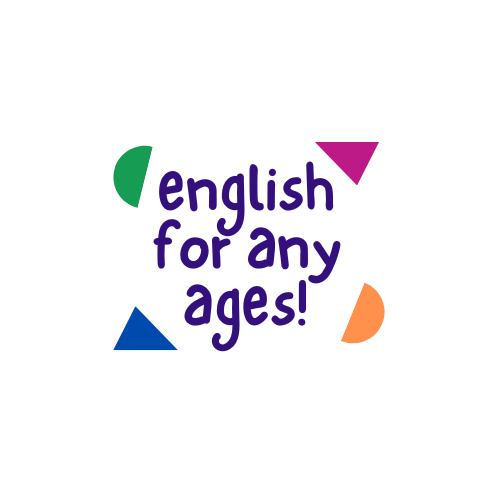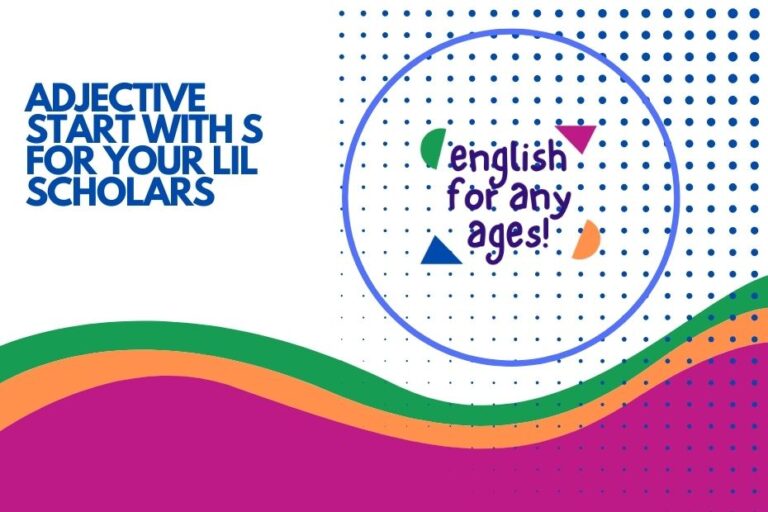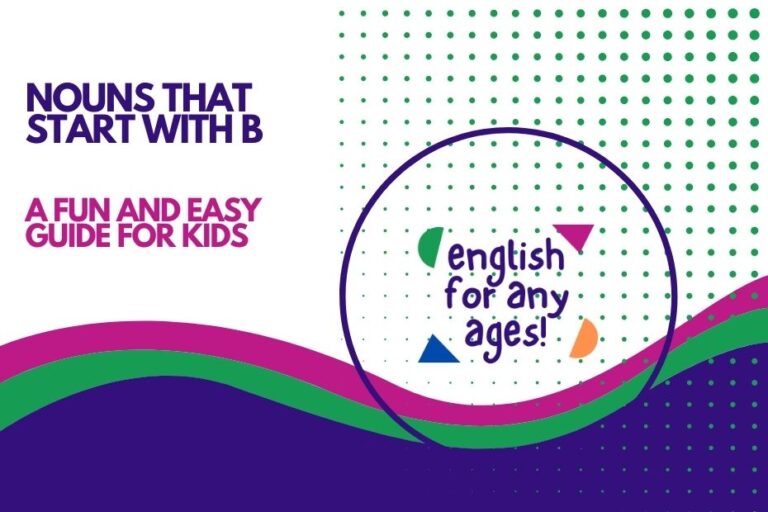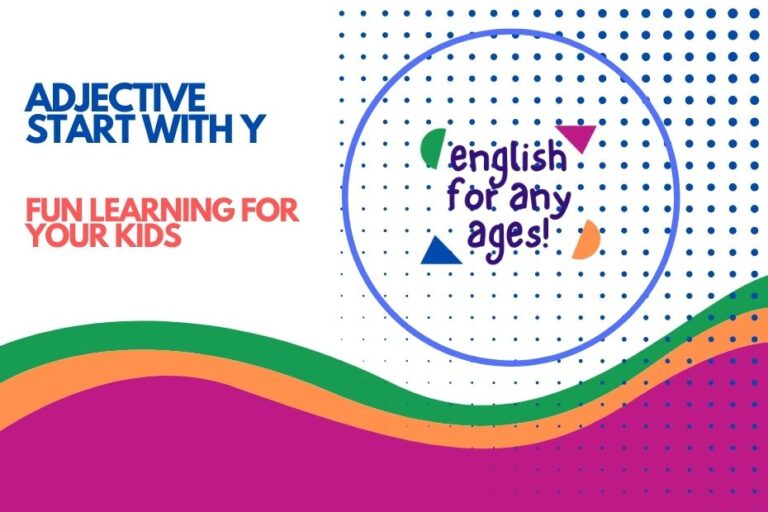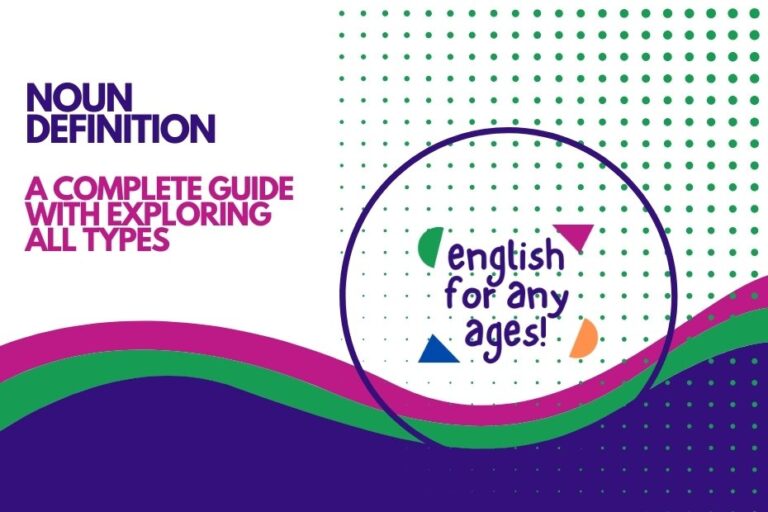101+ Adjective Start with C for Your Lil Scholars
Learning about adjective start with C helps you describe things in new, fun ways! Adjectives can make your writing more colorful and exciting. You’ll learn how to use words like “cute,” “crazy,” and “clean” to describe your world.
Keep reading to find out how these adjectives can make your sentences better.
- You’ll discover fun and easy adjectives.
- Learn how to describe things with C adjectives.
- Boost your writing with cool new words!
The article covers how adjective that start with C can add more detail to your sentences.
Examples of Adjectives Start with C
Explore fun examples of adjectives start with C to make your writing more exciting and detailed. Learn new words!
Interrogative adjective
Interrogative adjectives are words like which, what, and whose. They are used to ask questions and always come before nouns. For example, in the sentence, “Which color do you like?” the adjective “which” helps you ask about a specific thing. These words are very important because they help kids ask the right questions in different situations.
Learning about interrogative adjectives makes it easier to ask questions and find answers quickly. Without these words, it would be harder to get clear answers to what you need. Knowing how to use them helps kids communicate better and makes their conversations more meaningful.
In daily life, we use interrogative adjectives to learn more about things. Whether you’re asking about food, toys, or school supplies, these words will help you get the information you need. Practicing with interrogative adjectives will help you become a better question-asker.
Demonstrative adjectives
Demonstrative adjectives like this, that, these, and those are used to point out specific things. They help show whether something is near or far. For example, “This book is fun” means the book is close, while “That book is old” means the book is farther away. They help make our sentences clearer and more specific.
Knowing how to use demonstrative adjectives is essential because they help kids describe objects clearly. Without them, sentences might be confusing or not give enough detail. Learning to use these words helps kids communicate with confidence and precision.
In everyday conversations, we use demonstrative adjectives to talk about things around us. Whether you’re talking about a toy, a pet, or your school supplies, demonstrative adjectives are very helpful. Try using them the next time you talk about something near or far!
Possessive adjectives
Possessive adjectives, such as my, your, his, her, its, our, and their, show ownership or possession. For example, “This is my pencil” means the pencil belongs to me. They are very important because they help kids explain who owns what in a sentence, making communication clearer and more specific.
Learning how to use possessive adjectives helps kids show possession, making conversations more understandable. Without them, it would be hard to know who something belongs to. Mastering possessive adjectives also helps kids write better stories or give clearer instructions.
Kids use possessive adjectives in many situations. Whether you’re talking about your family, your pets, or your favorite toys, these adjectives make it easier to explain ownership. Using them helps you express yourself more clearly and accurately.
Proper adjectives
Proper adjectives are words formed from proper nouns, like American, Mexican, or French. They are used to describe something related to a specific place or culture. For example, “I love French food” uses “French” to describe the type of food. These adjectives are important because they help us talk about things related to countries, languages, or specific names.
Learning about proper adjectives helps kids describe things that are tied to specific locations or people. Without them, it would be difficult to understand the connection between a noun and its origin. Proper adjectives make sentences more specific and interesting, especially when talking about different cultures.
In school or while talking to friends, kids use proper adjectives to describe food, books, or even clothes that come from different countries. Proper adjectives help you be more detailed when talking about things or places. Practice using them to sound more knowledgeable about the world!
Compound adjectives
Compound adjectives are formed by combining two or more words to describe something. Examples include blue-eyed, well-known, and high-pitched. These adjectives often describe specific features or qualities. For example, “He has blue-eyed charm” uses a compound adjective to describe someone’s eyes. Compound adjectives help make descriptions more precise.
Using compound adjectives is helpful because they allow kids to describe things in a more detailed way. Without compound adjectives, descriptions would be less vivid. Mastering compound adjectives helps kids express themselves more clearly and add extra detail to their writing or speech.
In stories, writing, and conversations, compound adjectives allow kids to add more description. When talking about people, animals, or things, compound adjectives help you paint a clearer picture in the listener’s mind. Next time you describe something, try using a compound adjective to make your sentence more fun!
Descriptive adjectives
Descriptive adjectives are used to describe the quality, color, size, shape, or appearance of something. For example, “The small, round ball” uses descriptive adjectives to explain the ball’s size and shape. These adjectives are important because they help kids paint a picture with words, making stories more exciting.
Learning descriptive adjectives allows kids to talk about what things are like in more detail. Without them, sentences would sound plain and boring. Knowing how to use descriptive adjectives helps kids make their writing or speaking more lively and engaging for others.
In everyday life, descriptive adjectives are used all the time. Whether you’re talking about your favorite toy, pet, or food, descriptive adjectives help others understand exactly what you’re talking about. Try using them to make your next story more fun and interesting!
Attributive adjectives
Attributive adjectives are adjectives that come directly before a noun to describe it. For example, “The tall tree” uses “tall” to describe the tree. Attributive adjectives are important because they help give more information about a noun right away, making the sentence clearer and easier to understand.
When kids learn how to use attributive adjectives, they can quickly provide more information about the nouns they talk about. Without them, sentences would be less descriptive and harder to follow. These adjectives help kids write better descriptions and provide clear details in stories.
In writing and speaking, attributive adjectives are used to add extra detail to nouns. Whether you’re talking about animals, people, or places, these adjectives help you describe them more effectively. Practicing them will help you communicate more clearly and confidently!
Comparative adjectives
Comparative adjectives are used to compare two things. They usually end in -er or use the word more. For example, “This book is easier” or “This book is more interesting.” These adjectives are important because they help kids compare objects, people, or ideas more effectively.
Learning how to use comparative adjectives helps kids make comparisons. Without these adjectives, it would be hard to explain how two things are different or similar. Mastering comparative adjectives allows kids to express ideas in a clearer, more interesting way.
In everyday conversations, comparative adjectives are useful when talking about anything that can be compared. Whether you’re comparing your toys or your favorite subjects, using comparative adjectives will help you express yourself better. Try using them to compare things you like!
Predicative adjectives
Predicative adjectives are adjectives that come after a linking verb, such as is, are, or seem. For example, “The cake is delicious” uses “delicious” as a predicative adjective. These adjectives are important because they help describe the subject of a sentence in more detail.
Knowing how to use predicative adjectives helps kids create more meaningful sentences. Without them, it would be difficult to describe a subject properly. Mastering this type of adjective allows kids to write and speak more clearly.
In stories or conversations, kids often use predicative adjectives to describe the subject of their sentences. Whether it’s about food, people, or places, these adjectives help explain things in a more complete way. Practice using predicative adjectives to improve your sentences!
Superlative adjectives
Superlative adjectives are used to show that something has the highest degree of a quality. They often end in -est or use the word most. For example, “This is the best book” or “This is the tallest building.” These adjectives help kids show the extremes of a quality.
Superlative adjectives are important because they help kids explain what is the most, least, or best in a group. Without them, it would be harder to describe what stands out. Knowing how to use superlative adjectives makes conversations and writing more precise and exciting.
In school, kids can use superlative adjectives when comparing things like favorite books or sports. These adjectives help you show what stands out from the rest. Practice using them to talk about your favorite things!
Distributive adjectives
Distributive adjectives are used to talk about members of a group individually. Words like each, every, and either are examples. For instance, “Each student has a pencil” means everyone in the group has one pencil. These adjectives help break down a group into smaller parts.
Using distributive adjectives helps kids talk about groups of people or things in a more detailed way. Without these adjectives, it’s harder to explain how something applies to individual members of a group. Learning how to use them makes communication clearer.
Kids use distributive adjectives when they want to talk about each person or item separately. Whether it’s about a group of students or a collection of toys, these adjectives help kids describe things individually. Practice them in your next story or conversation!
Quantitative adjectives
Quantitative adjectives describe the quantity of something, like some, few, or many. For example, “There are many books on the shelf” shows how many books there are. These adjectives are useful because they help kids talk about how much or how little of something there is.
Knowing how to use quantitative adjectives helps kids talk about amounts in a clear way. Without them, it would be harder to explain how much of something there is. Mastering quantitative adjectives lets kids write and speak more effectively.
In conversations or stories, kids use quantitative adjectives to talk about numbers or amounts. Whether it’s counting toys, pets, or friends, these adjectives make descriptions more specific. Practice using them to explain how many things are around you!
Participial adjectives
Participial adjectives are adjectives formed from verbs and usually end in -ing or -ed. For example, “The crying baby” uses “crying” as a participial adjective to describe the baby. These adjectives are essential because they help give more information about a noun in a dynamic way.
Learning participial adjectives helps kids describe actions or states that are happening or have happened. They provide more detail and make your descriptions more vivid. Mastering this type of adjective helps kids add a lot of variety and detail to their writing and speech.
In stories, kids can use participial adjectives to describe people or things involved in an action. Whether it’s a jumping kangaroo or a tired student, participial adjectives make descriptions richer. Practice using them to describe everything around you in more exciting ways!
Coordinate adjectives
Coordinate adjectives are two or more adjectives that work together to describe a noun. For example, “It was a cold, windy day.” Both “cold” and “windy” describe the day equally. These adjectives are important because they allow kids to describe things with more detail and balance.
Knowing how to use coordinate adjectives lets kids create more interesting and detailed descriptions. Without them, it would be harder to convey all the qualities of a noun. Learning to use them correctly helps kids make their sentences more exciting and vivid.
In everyday conversations, kids use coordinate adjectives to talk about things with more detail. Whether describing the weather, animals, or favorite foods, these adjectives help add extra flavor to the descriptions. Try using them next time you talk about something with two or more qualities!
Indefinite adjectives
Indefinite adjectives are used to describe nouns in a non-specific way. Words like some, any, few, and several are examples. For example, “I have some books” doesn’t tell you exactly how many. These adjectives are important because they help kids express an idea without being too exact.
Learning about indefinite adjectives helps kids talk about things in a broad or general sense. Without them, it would be hard to talk about amounts or things in a vague way. Mastering indefinite adjectives allows kids to express themselves more freely and creatively.
Kids use indefinite adjectives when they want to talk about things without specifying the exact amount. Whether it’s about food, toys, or friends, these adjectives allow you to speak in a more general way. Practice using them in your sentences to make them sound more natural!
Adjectives of quantity
Adjectives of quantity tell us how much or how many of something there is. Words like all, some, much, and little are examples. For example, “I have much homework” tells you the amount of homework. These adjectives are useful for explaining quantities in a sentence.
Understanding adjectives of quantity helps kids describe the amount of something they are talking about. Without these adjectives, it would be difficult to show how much or how little of something there is. Mastering them allows kids to make their sentences more specific and understandable.
In daily life, adjectives of quantity are used to talk about amounts of food, toys, and more. Whether it’s about how much ice cream you want or how many friends you have, these adjectives help you communicate better. Practice using them to describe the things around you!
Appositive adjectives
Appositive adjectives are adjectives that appear in apposition, which means they come right after a noun to explain or modify it. For example, “My friend, the tall girl, is here.” The adjective “tall” modifies “girl” in this sentence. These adjectives help kids provide more detail about a noun.
Learning appositive adjectives is helpful because they allow kids to give more details in their sentences. Without them, sentences would sound less descriptive and lack important information. Mastering appositive adjectives helps kids create more exciting and informative sentences.
In stories, kids can use appositive adjectives to give extra information about people, places, or things. Whether describing a character or an object, these adjectives help explain who or what you’re talking about. Practice using them in your writing or conversations!
Denominal adjectives
Denominal adjectives are adjectives formed from nouns. For example, musical, scientific, and historical are derived from nouns like “music,” “science,” and “history.” These adjectives are helpful because they connect a noun to its characteristic or related idea.
Understanding denominal adjectives helps kids describe something in terms of its origin or connection to a noun. Without these adjectives, it would be hard to show how a noun is related to an idea or characteristic. Learning them lets kids express ideas more clearly and specifically.
In daily conversations, denominal adjectives help kids explain things based on their origin. Whether it’s about historical events, musical instruments, or scientific discoveries, these adjectives help describe the subject better. Use them to sound more detailed when talking about anything!
Numeral adjective
Numeral adjectives are used to show numbers or positions. For example, one, two, first, and second are all numeral adjectives. These adjectives are essential because they help describe the quantity or order of things, making it easier to understand comparisons.
Knowing how to use numeral adjectives helps kids talk about numbers or sequences easily. Without them, it would be harder to describe things in terms of amount or position. Learning them is crucial for kids to express themselves clearly when counting or giving directions.
Kids use numeral adjectives when counting objects, telling time, or giving instructions. Whether it’s about the number of books or the order of events, these adjectives make things clear and easy to follow. Practice using them in your everyday activities to get better!
Number adjectives
Number adjectives are similar to numeral adjectives but are used to describe the exact count or position. Examples include three, twentieth, and dozen. These adjectives help kids specify the exact amount or position of something.
Learning about number adjectives helps kids express things in exact terms. Whether it’s counting objects or placing things in order, number adjectives are essential. Mastering them allows kids to communicate exactly what they mean, making conversations clearer.
In everyday situations, number adjectives help kids talk about precise amounts. Whether it’s about how many cookies you have or which place you finished in a race, these adjectives help you express numbers accurately. Try using them to talk about things around you!
Absolute adjectives
Absolute adjectives are adjectives that describe something in its extreme form, without needing comparison. For example, perfect, dead, and unique are absolute adjectives. These adjectives help describe something in a way that doesn’t change, no matter the situation.
Learning about absolute adjectives helps kids describe things that are final and unchanging. Without them, it would be harder to express things that are complete or definite. Mastering these adjectives helps kids make their descriptions more powerful and clear.
In stories or conversations, kids can use absolute adjectives to describe things in their strongest form. Whether it’s about perfect weather or unique talents, these adjectives make descriptions more vivid. Practice using them to enhance your descriptions and make them more impactful!
Emphasizing adjective
Emphasizing adjectives are used to add extra importance to a noun or pronoun. Examples include very, quite, and extremely. For example, “She is very kind” uses “very” to emphasize the kindness. These adjectives are important because they make your descriptions more powerful.
Knowing how to use emphasizing adjectives helps kids make statements stronger and more convincing. Without them, your sentences might sound weak or unclear. Learning to use emphasizing adjectives allows kids to communicate with more energy and impact.
In everyday conversations, kids use emphasizing adjectives to highlight what they think is most important. Whether you’re talking about something exciting or describing a favorite activity, these adjectives make your sentences stand out. Practice using them to express yourself with more emotion and strength!
Wrap Up
Adjective start with C can make your sentences more fun and detailed. Practice using the examples to get better at describing things.
If you have any questions or find something confusing, feel free to comment or email us. We’re always ready to help you!
